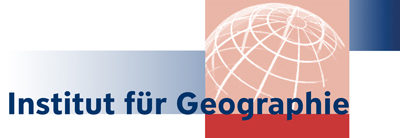Institutskolloquium PG: Teleconnections between Northern and Southern Hemispheric ice sheet evolution during the Last Deglaciation. – Mi. 17.01.2024
Teleconnections between Northern and Southern Hemispheric ice sheet evolution during the Last Deglaciation.
MSc Pierre Testorf (Universität Hamburg/MPI für Meteorologie)
Moderation: Dr. Johannes Fürst
This study focuses on understanding how Northern Hemispheric ice sheet evolu-
tion can impact Southern Hemispheric ice sheets during the Last Deglaciation. Few
models exist that can model the Last Deglaciation and often comprise simplied
physics. Therefore, our ability to study the feedbacks between ice sheets and other
climate components in its fullest complexity over longer time scales is greatly re-
duced. The Max-Planck-Institute for Meteorology in Hamburg conducted the rst
simulations of the Last Deglaciation with a primitive equation Earth System Model
and interactive ice sheets in the Northern and Southern Hemisphere. However, simu-
lated ice volumes in the Northern and Southern Hemisphere are higher than in proxy
reconstructions. To test if the additional ice present in the Northern Hemisphere can
drive and explain the discrepancies between the reference simulation and the recon-
struction in the Southern Hemisphere, two sensitivity simulations were conducted.
In these sensitivity simulations, specic ice areas were removed in the Northern
Hemisphere, which eventually cause Southern Hemispheric ice sheets to enter an
unstable regime and retreat. The retreat is triggered by supplying more heat to
Southern Hemispheric ice shelves, through two distinct mechanisms. Firstly, higher
atmospheric surface temperatures in the removal areas warm Atlantic Ocean waters,
thereby increasing the geostrophic zonal ACC component. A stronger ACC carries
more heat to the ice shelves. Secondly, sea-level rise destabilizes the Southern Hemi-
spheric ice sheets, which leads to freshwater release inhibiting deep convection and
enhancing subsurface warming. More heat in the ice shelf vicinity reduces buttress-
ing forces and lets the ice sheets transition into an unstable regime. This instability
onset is inherently linked to the initial forced sea-level rise.
Wann: Mittwoch, 17.01.2024 von 12:30 bis 14:00 Uhr
Wo: Präsenz, Seminarraum Tennenlohe, Wetterkreuz 15, 91058 Erlangen.
Vortragsübersicht für das Institutskolloquium im Wintersemester 2023/24.
******
Fragen zum Kolloquium?
Organisation: Maximilian Brönner (KG) (maximilian.broenner@fau.de) & Dr. Sebastian Feick (PG) (sebastian.feick@fau.de)
